► Convertible electric Maserati driven in the UK
► 750bhp, AWD and ultra-luxurious
► But how does it face a freezing British winter?
A 750bhp convertible, minus-degree temperatures and summer tyres. Not the ideal conditions to try out Maserati’s new GranCabrio Folgore in the UK for the first time.
While you can still buy a V6-powered GranCabrio Trofeo, it’s the electric Folgore version that is the talking point, and somewhat unique at the moment at this price point. Even if the market for an £185k electric convertible is limited to say the least.
My esteemed colleague Piers Ward got to try it in Italy during the blistering summer months, but now it’s arrived in the UK, I’m not so lucky. Of course, modern-day convertibles are designed to be used in all seasons, but what about an electric drop-top? Well, that opens up a new discussion completely regarding range and usability.
At a glance
Pros: Gorgeous styling, beautifully refined, smart interior
Cons: Small boot, lacks the range of a GT car
What’s new?
Everything. Not only has Maserati lopped the roof off the GranTurismo coupe, but it’s also the first time anyone has done a luxury, convertible electric car (and yes, we know the MG Cyberster exists but the price points are somewhat different).
It looks utterly stunning, arguably the best of Maserati’s current offerings, with a long-nose, mid-cab stance that works so well on convertibles, everything in proportion. The bonnet itself measures more than three square metres, so be wary of dinging it. There’s nothing radical about the design, Maserati actively opts to follow the previous generations’ lines. That seems sensible given what a stunner the previous car was too.
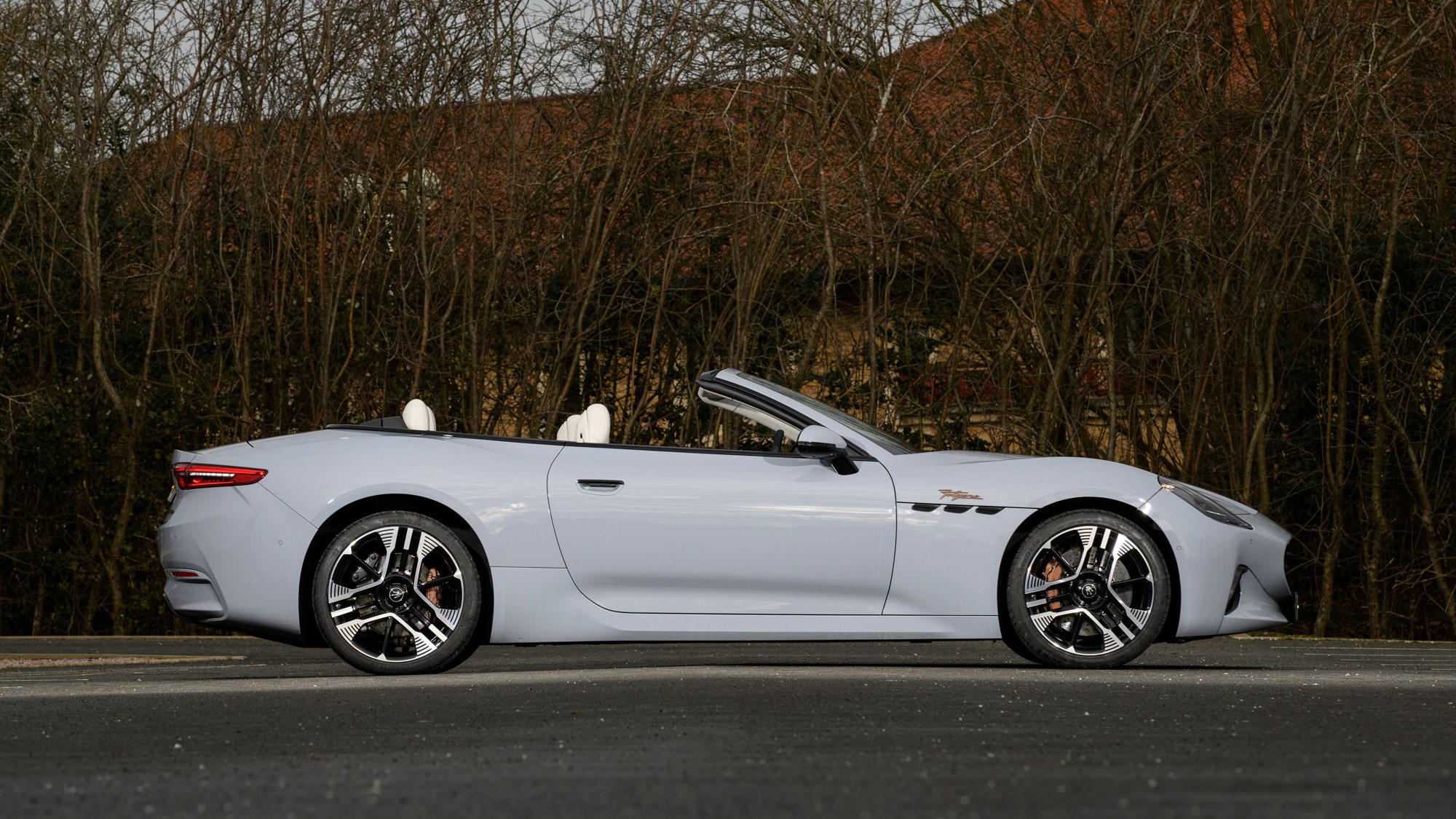
Incidentally, the petrol and electric versions have largely similar looks as Maserati has opted to keep a much more traditional front grille for both, rather than blanking off the Folgore’s. It’s just that the Folgore’s has a honeycomb effect and a blanking infill on the lower chin.
With a fabric folding roof that collapses in 15 seconds, there aren’t many packaging compromises so the looks aren’t spoiled by having to cram a roof into an awkward space. Boot space is improved from the last version but you’ll still need to pack carefully for a weekend away – squishy bags are your best bet.
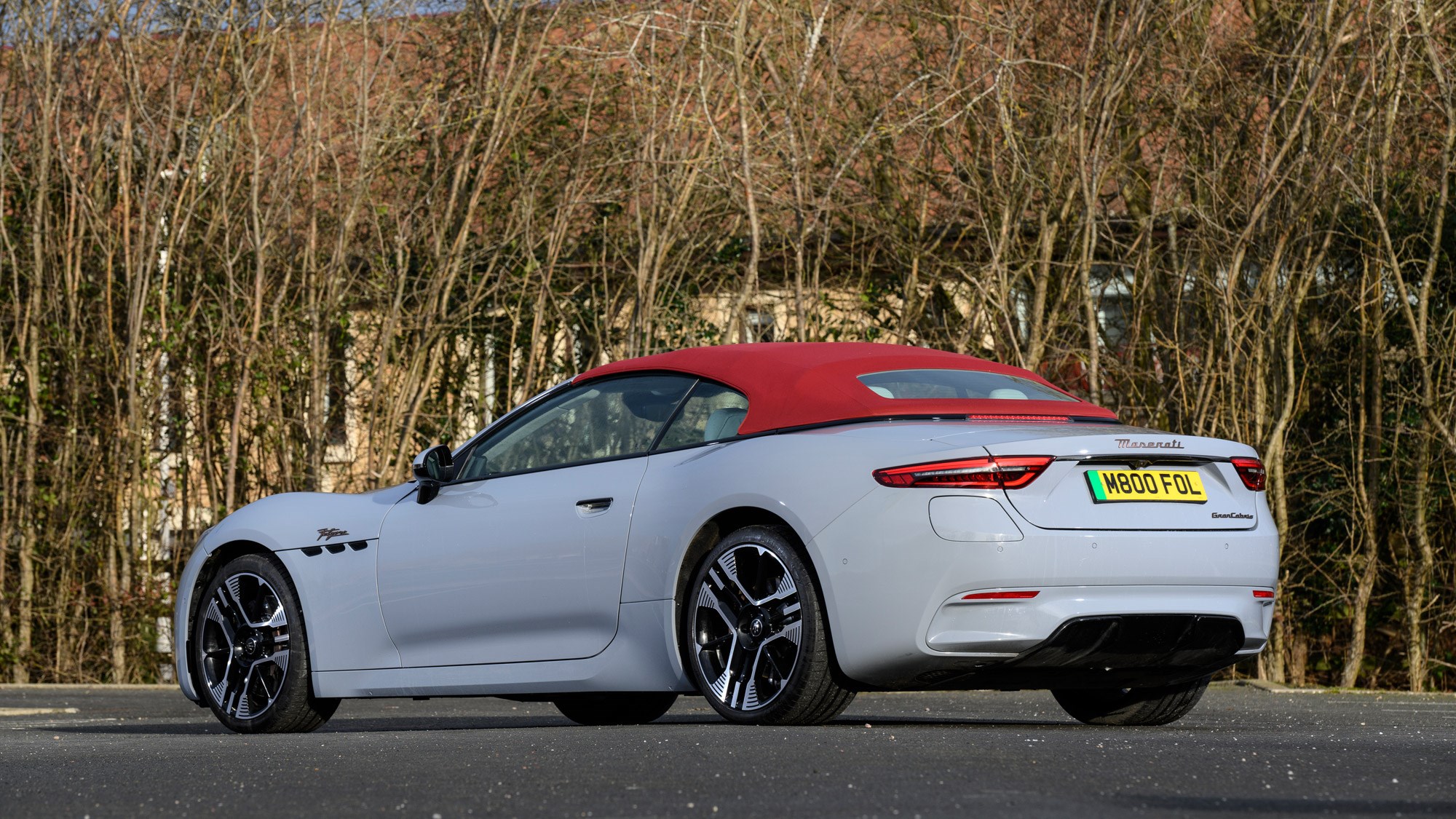
Both the GranCabrio and GranTurismo coupe were developed alongside each other, with torque vectoring possible on the Folgore thanks to its twin rear motors and allowing it to send up to 396bhp to a single rear wheel. Both cars are 65% aluminium but even with that lightweight material in use, the Folgore is still 440kg heavier than the Trofeo.
What are the specs?
It’s got three electric motors (one at the front, two at the rear) and puts out a significant 751bhp and 996lb ft of torque – a fair whack more than the 535bhp and 479lb ft you get from the petrol GranCabrio Trofeo.
The 83kWh battery is arranged in a ‘T’ shape under the car, with Maserati opting not to go down the full skateboard route because they needed the car to sit lower, both for aesthetics and how it drives. Maserati claims a range of 260 miles, but you really won’t get that in winter. Minus temperatures resulted in the range dropping to around 170 miles. Not a lot for a GT car, though 200 miles is more likely in better weather.
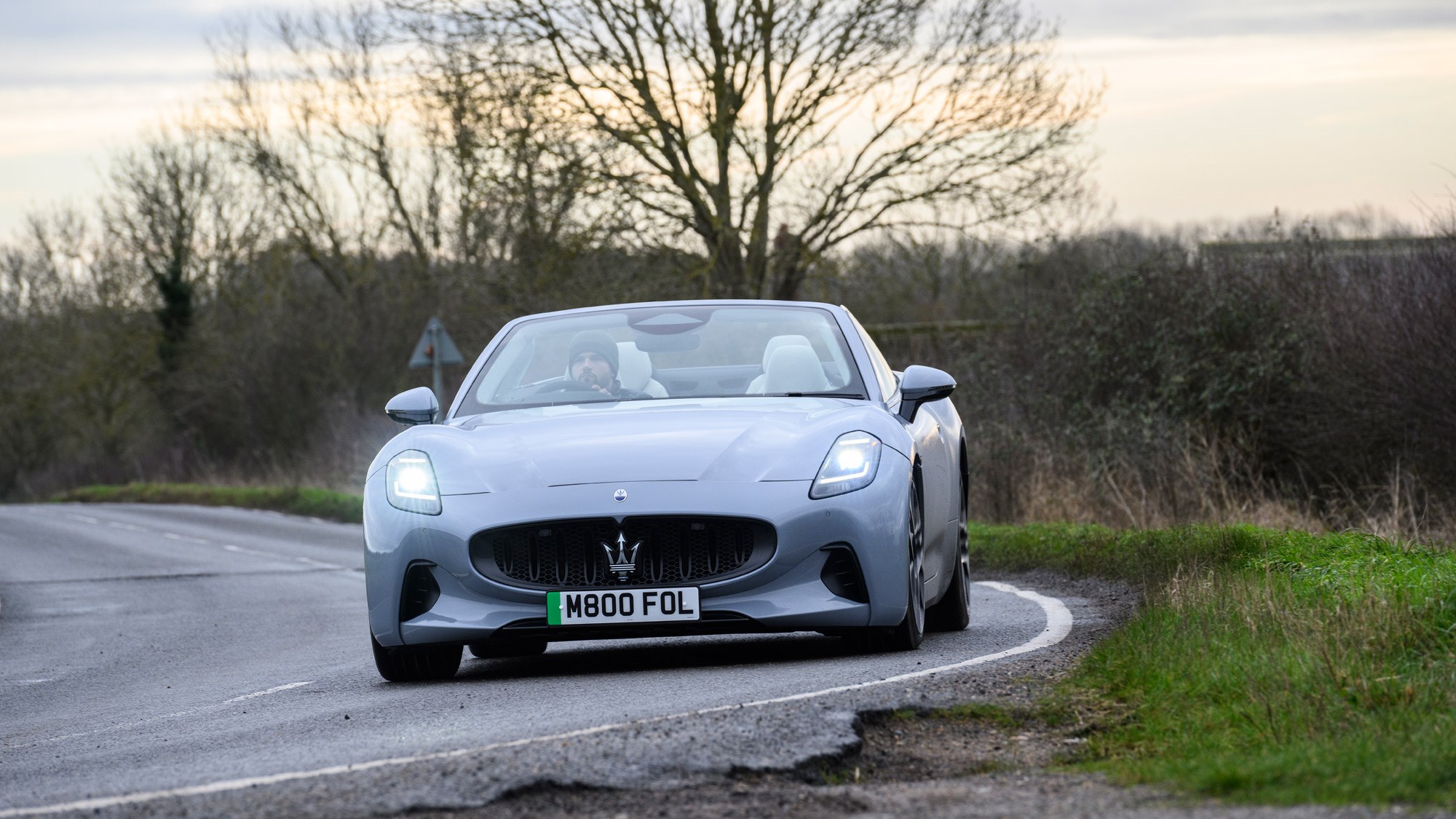
The GranCabrio is also equipped with an 800V electrical architecture, allowing it to charge at up to 270kW, and meaning a 10 to 80 per cent rapid charge can theoretically take place in just 18 minutes. I tried to rapid charge the GranCabrio on two sets of 350kW chargers to test the charge curve, but neither bank of units would work (no fault of the Maserati, as other cars were also failing to charge). That said, when I had a GranTurismo Folgore in 2024, its charging speeds and curve are some of the most impressive I’ve ever seen.
How does it drive?
Right, I’ll tell you what it’s like to drive in winter before handing over to Piers to tell you what it’s like on the Italian riviera…
For a car with so much power in freezing conditions, the GranCabrio is remarkably easy to use. The throttle response is easy to modulate, and you quickly learn how much power you can safely deploy. The delivery is absolutely effortless, for most of the time you won’t dip into that final reserve of power, rather 70 per cent throttle is more than enough to blast past a line of cars. It also makes a cool ‘sport’ sound, audible from the outside, too, though it can be ever so slightly droney at speed.
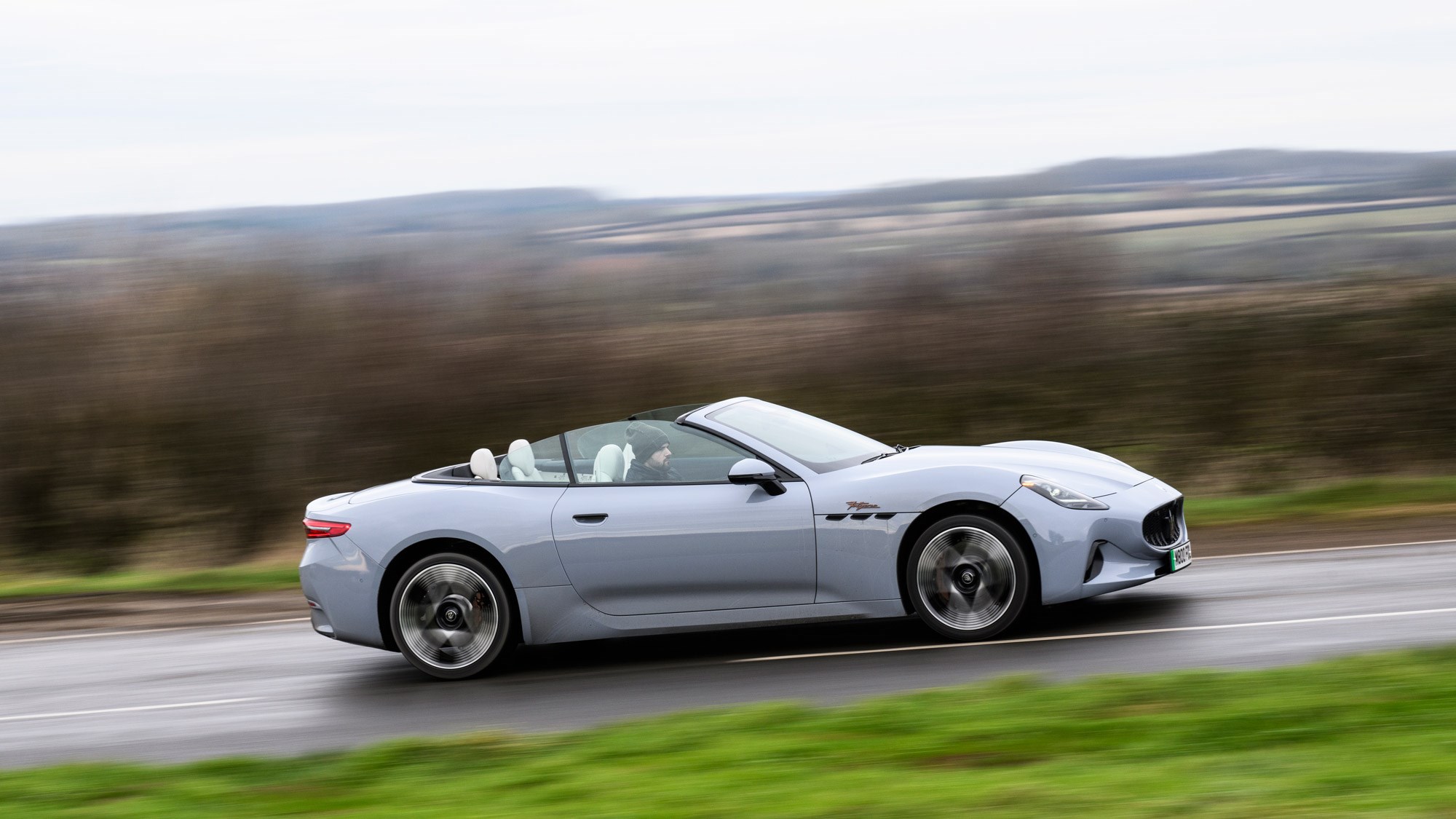
There are four modes – Maximum Range, GT, Sport and Corsa. The latter disables ESC – and given I didn’t once drive the GranCabrio when the temperature was above about two degrees, I’m not ashamed to admit I didn’t venture into this. Sport is my preferred, and with the ‘sports’ damping turned off – it becomes a bit too fidgety with it turned on. The ride is largely excellent – and especially at low speeds. Few cars glide as comfortably over a speed bump. Top work to the damping team; it’s only particularly sharp bumps in the road where you can feel a bit of scuttle shake.
My golden rule of driving a convertible is if it’s not raining, the roof has to be down. I’m now adding the disclaimer about if the roof isn’t frozen to the mix, and when the canvas had finally thawed in the sun, down the roof comes. It takes just 15 seconds and to do so, you slide your finger across the lower touchscreen – and is a bit of a pain, in truth. How 2025. Imagine having a button! With the wind deflector fitted, refinement is remarkable for a convertible. Maserati has clearly thought about keeping noise to a minimum.
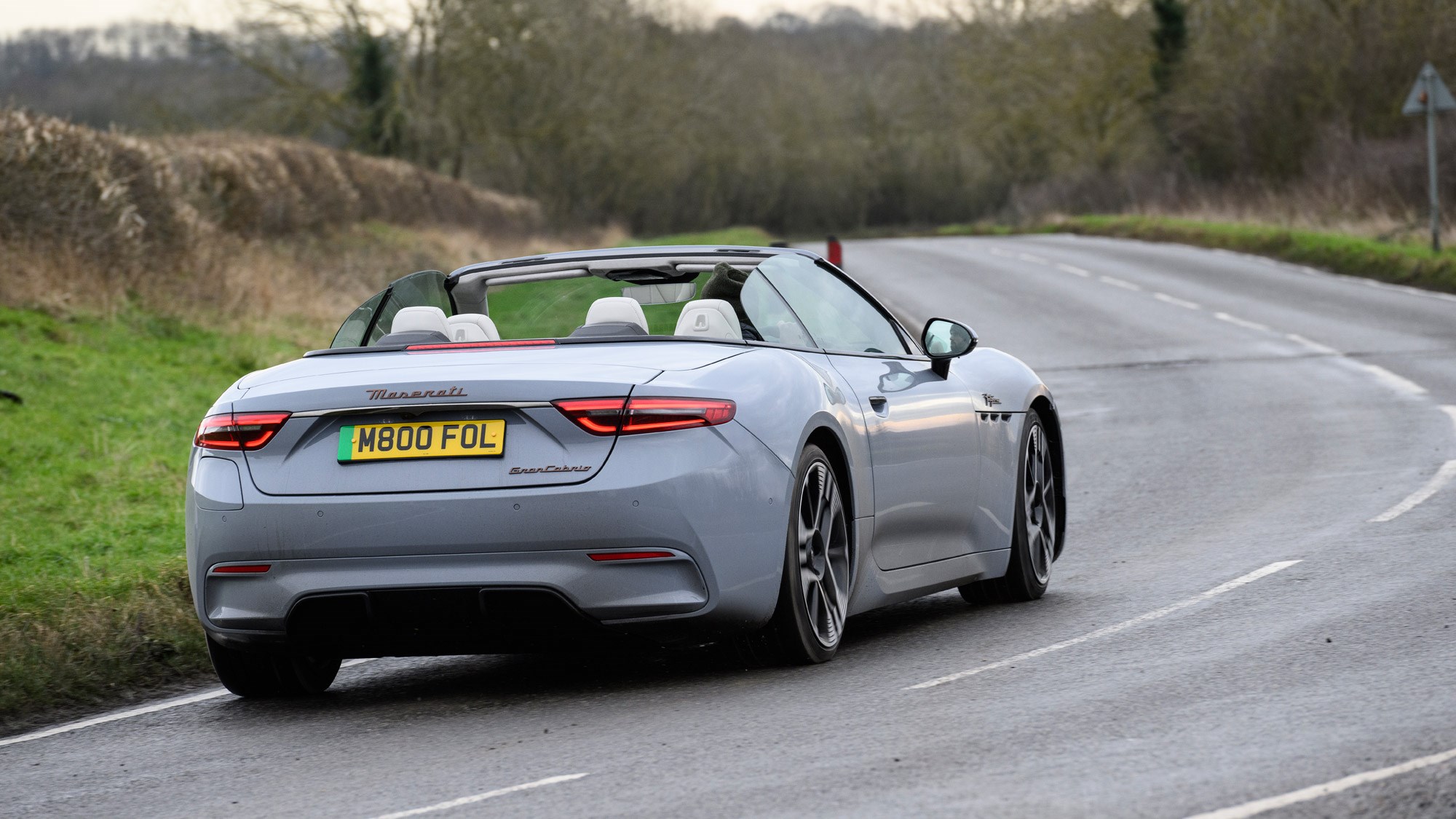
Now over to Piers in the sun…
As a car for wafting along the Riviera, few get close. The silent running that’s possible with an electric drivetrain suits it well, smoothly building torque and contributing to a car that feels relaxed with itself. No element seems to fight against another so it’s an easy car to relax into. Even in Italy, where some of the roads are sized much more for classic Fiat Pandas than the two-metre+ width of the Maserati.
With the sun out and the speed limit of 50mph on smooth Italian roads, few cars get close to the Folgore’s feelgood factor.
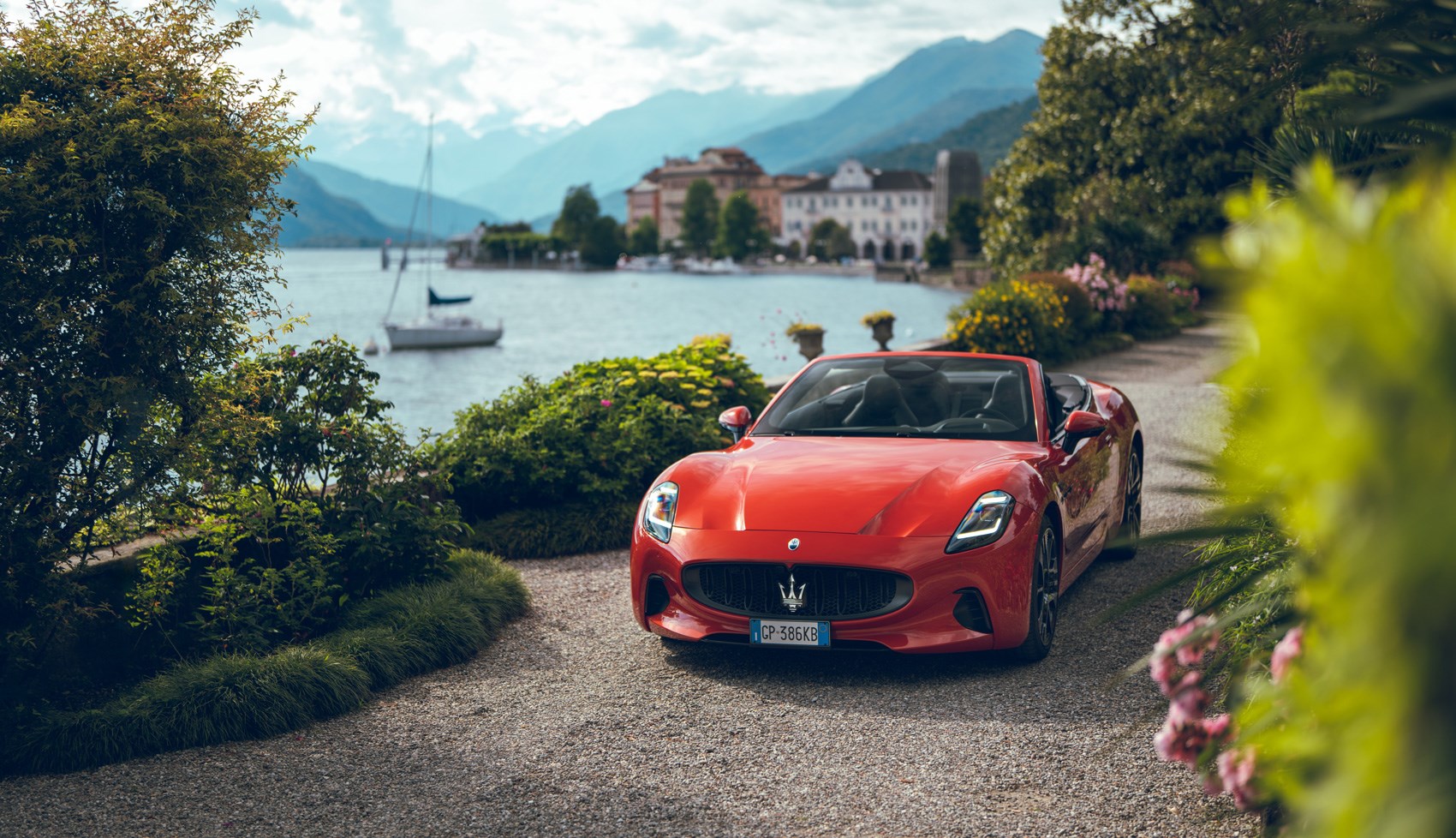
It’s no sports car, though. Up the pace and you need to drop the drive mode into the sportiest Corsa setting to keep the body control in check, otherwise you can feel the near 2.5-tonne kerbweight trying to heave the car about. Once in Corsa, there are two suspension settings to choose from – ‘S’ will be better for British roads, ‘H’ keeps the body more tied down. You need to keep switching between the two, varying it depending on the road surface and topography because Maserati hasn’t quite nailed the compromise between them. Arguably, that doesn’t matter much with this sort of car. If you want the handling one, go buy the Trofeo. Or the GranTurismo. Or the Porsche 911, come to think of it.
What’s the interior like?
Quite simply a thing of beauty. Just as you’d expect from the outside looks, the Italians have largely nailed the mix of tech and luxury on the inside as well. You can have soft leather upholstery or a material called Econyl made from various recycled plastics if you want to tick the sustainability box. There’s some slightly garish copper-coloured carbon fibre and fantastic metal shifters to control the regenerative braking.
The touchscreen set-up is improved with a twin-screen approach that works well. The lower one controls all the climate and roof while the upper is your information screen with elements like the radio and nav. The screens are placed like a folded book and are nicely integrated into the dash – a far cry from the modern trend of attaching a touchscreen to the top of the dashboard. The steering wheel buttons are the only cheap aspect, and are shared with a £25,000 Fiat 500 electric. A few metal buttons go a long way at this price.
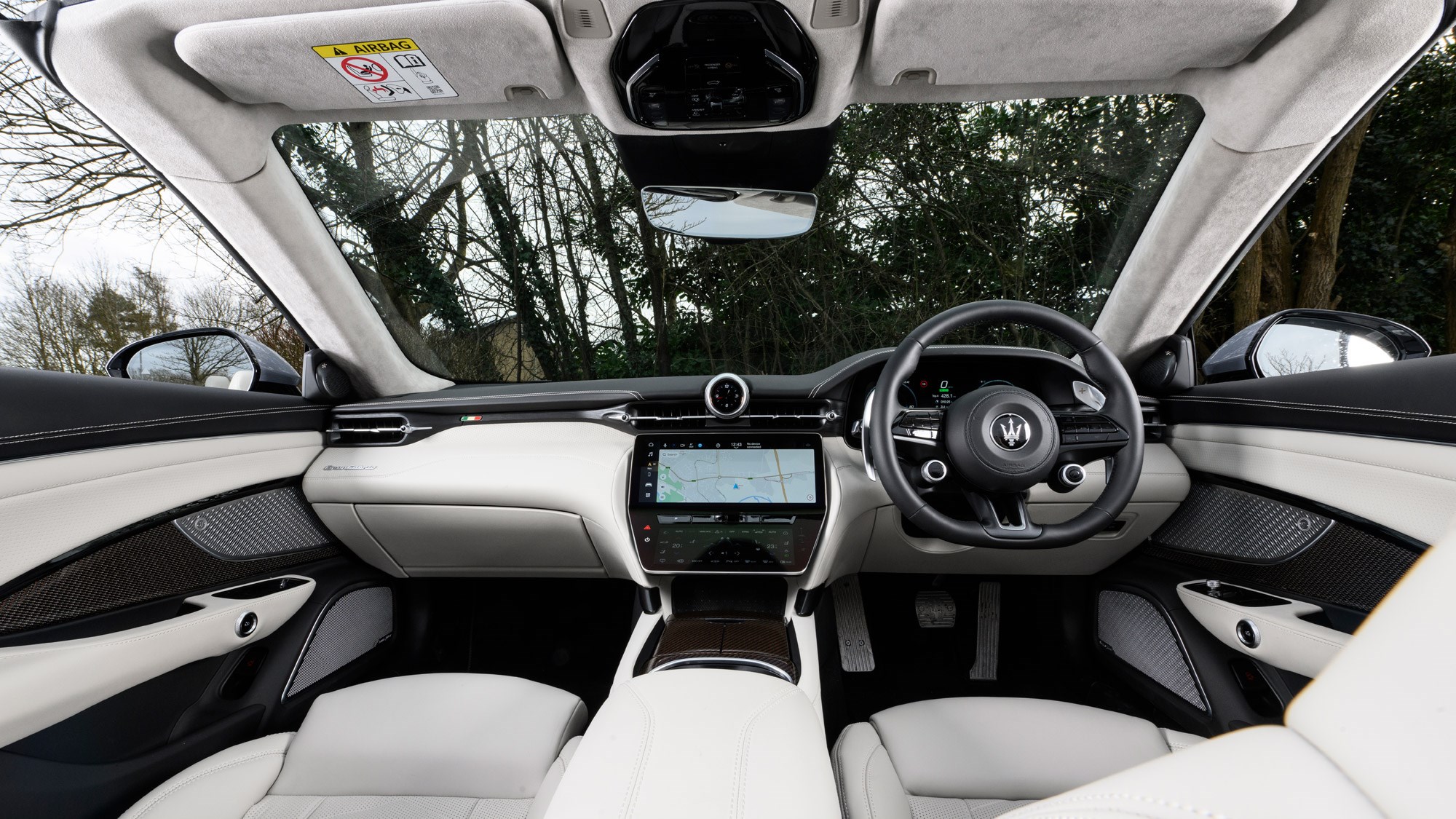
Rear room isn’t limo-generous but you can get two mid-sized adults back there without too much drama. It’s not a place to spend hours but because the backs of the front seats are quite sculpted, there’s enough knee room to make a trip down the coast road bearable. But the boot is very small, especially with the roof down. You’ll want squishy bags over suitcases. But it’s certainly an improvement on the 911 Cabrio, if not quite as good as the Bentley Continental GTC.
Before you buy
There’s just the one trim but as you’d expect you can hit the options extensively. Maserati do some beautiful colours but be aware as they’re unbelievably expensive – Fuoriserie Matte Blue paint is £29,160, for instance.
Things like the air scarf are standard, which works well to keep your neck warm, while the excellent Sonus Faber stereo is available with either 11 or 13 speakers, the latter costing £3360.
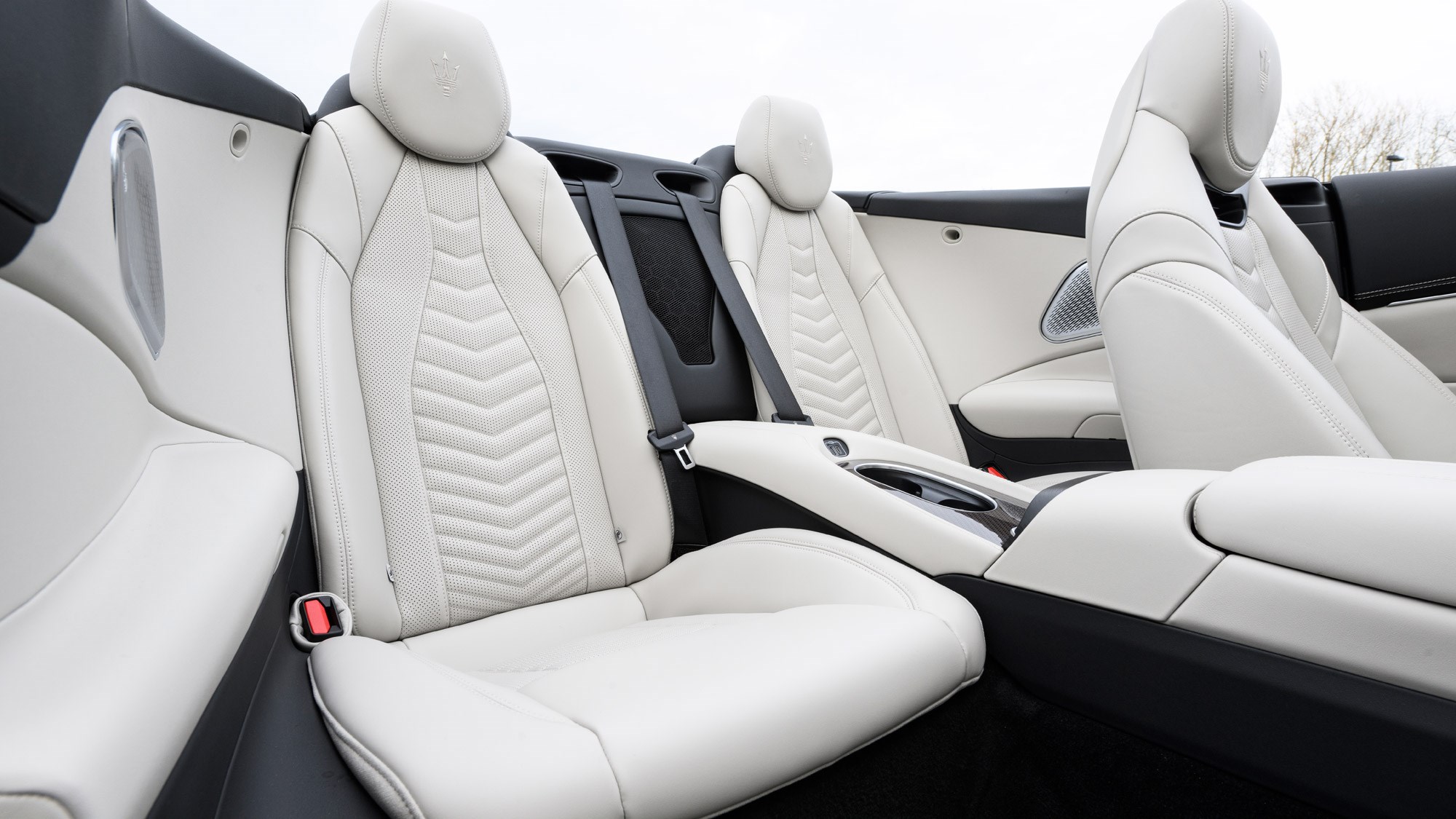
As for the price of the car, that’ll be £185,610 before you hit the options list. It’s £16,000 more than the GranCabrio Trofeo with its V6 and £6,000 more than the hard-top GranTurismo Trofeo. Not cheap, and the depreciation based on the few new-gen GTs for sale looks to be frightening.
As for rivals, there aren’t any as no-one else exists in this market. Sorry.
Verdict
Those wanting to listen to the rasp of a V6 or a rumble of a V8 with the roof down need to park their preconceptions at the door. The Folgore is a gloriously smooth and elegant way to enjoy a convertible, a very 21st-century way of enjoying a bit of climate change.
It’s not the finest handling car because of the additional weight, but it offers something unique and interesting. It’s not a car especially aimed at the UK and works better in Miami, the south of France or the Italian lakes, but even in a British winter, the GranCabrio Folgore is a delightful way of getting about with a level of refinement and finish lended perfectly to a GT car. Just a slight shame it doesn’t have the range to go with it.